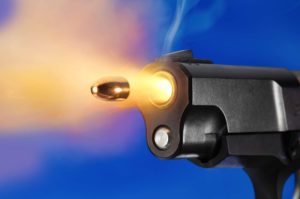ACE laminates are an ideal solution for transit agencies and operators seeking to harden their fleets and infrastructure, thereby protecting passengers, operators and operations.
Potential Threats
Public transportation infrastructure faces a range of threats. Traditional and more conventional threats include public mischief, vandalism, and protecting passengers from flying and broken glass in the event of an accident. Transit agencies have used ACE laminates in a variety of operational aspects, from protecting train and metro operators from flying debris to protecting bus drivers from thrown objects. ACE laminates have also been used to protect ticket fare agents from robbery and assault and as a means of providing discrete light armoring to cash transit and revenue operations vehicles and operations.
Given that transportation infrastructure is an integral part of a society’s overall critical infrastructure, bus and train stations present an attractive, symbolic and vulnerable target for international and homegrown terrorists seeking to cause injury and death and economic disruption.
Airports are constitute a highly symbolic target for terrorism. Traditionally built with a high degree of glass usage, operators of these stations and terminals face a difficult challenge in retrofitting and hardening their existing built-form.
- The threat of flying debris and thrown objects to both equipment operators and passengers
- Injury to passengers and staff as a result of accidental breakage
- Terrorist attacks and bombings against stations and terminals
- Hardening entrance-ways to resist active-shooter type attacks
- Protecting ticket fare agents against robbery, and assault
Threat Mitigation
ACE laminates are an effective, proven and cost effective technology enabling bus, rail and air operators to seamlessly and effectively strengthen and harden core parts of their operations, thereby ensuring passenger and employee safety and enhanced general security. ACE security laminates can be used as a retrofit solution to strengthen and harden existing glass used in buildings and operations at a fraction of the cost of undertaking more extensive and invasive renovations and installing thicker, heavier glass assemblies.
- Hardening glass in airport terminals and bus stations to protect against IEDs and bombing attacks
- Hardening key entrance-ways to protect against active shooter type attacks
- Using ACE laminates to discretely and effectively provide resistance against small arms fire on revenue operations and cash transit vehicles
- Protecting fare agents against robbery and assault by reinforcing fare booths
- Protecting passengers and the public against injury from accidental glass breakage

FAQs
General Knowledge
What is the difference between regular window tint and ACE safety laminate?
ACE security laminates are up to seven times thicker than some window tints. In addition, our safety laminate uses a pressure sensitive adhesive that forms a physical bond with glass. The combination of increased thickness and an aggressive adhesive greatly increases the film’s ability to absorb the energy of an impact and keep glass intact. Unlike ordinary window films, ACE security laminates are designed to resist impact related forces.
What level of bullet resistance can you provide?
ACE laminates can attain almost any level of bullet resistance, up to and including protection from 7.62 x 51 NATO AP ammunition. It should be noted that ACE laminates work in conjunction with the glass substrate to create an overall ballistic assembly comprised of both glass and laminate. Subsequently, higher levels of bullet resistance will require a thicker glass base. On standard commercial grade ¼ inch glass, ACE is routinely providing protection to UL Level 1 which is a highly functional level of protection against handguns. As each project is evaluated by our in-house Technical, Ballistics and Threat Assessment team on a case-by-case basis, we encourage clients to contact us to discuss their specific needs.
Why is there a small gap between the edge of the film and the frame edge of glass?
There has to be a small gap (1/16 – 1/8 inch) along the edge to allow for the removal of the ‘slip solution’ used when installing our ACE safety laminates. Also, in warm temperatures the film can expand. If there is no room for it to expand it will touch the edge of the frame and lift off the glass causing a “finger” to appear which means the film will have to be replaced. There is no compromise to the protection provided by leaving this gap as glass does not break in a straight line (in other words, it won’t break along the unprotected glass). Rather, the shatter lines in glass will direct the energy into the middle of the window pane which is protected.
Will the installation be noticeable once installed?
ACE security laminates are optically clear. If installed to factory specifications, the installation should be perfectly, optically clear. There may be some minor reduction in optical clarity with some ballistic applications.
Will ACE safety laminate make my windows hurricane proof? Earth-quake proof? Burglar-proof?
No.
Security or safety laminate is hurricane-proof, earthquake-proof or burglar-proof. ACE security laminates are designed to make the window glass more shatter-resistant. In the event of a wind storm, these films may have significant safety and security value. They can reduce the risk of injury from flying shards of broken glass, and possibly help prevent debris and water penetration through the window depending on the severity of the storm (and the type of glass, framing system, size and velocity of objects, and more).In an earthquake, these films can reduce the risk of serious injury from flying shards of broken glass, and possibly prevent glass from falling out of a home or building. Again, much may depend upon the severity of the quake (and the type of glass, framing system, and more).
If a competitor’s film is just as thick, will it be just as strong as ACE?
Different grades of window security laminate and window film are often categorized by their thickness which is measured in an Imperial unit of measure called mils. One mil is one-one-thousandth (1/1,000) of an inch. Note: a mil (which is an Imperial unity of measure) is not the same as a millimetre (which is a metric unit). Practically speaking, a 14 mil film will be about half the thickness of a credit card.
Manufacturers and suppliers often refer to the grade of a window film by its thickness. The implied assumption is that thicker is better AND that all films and laminates of the same thickness work the same and are just as good as the next.
This is not necessarily the case.
Why? There are several factors that contribute to performance and strength once a film is applied to a window.
Factor #1: The quality of the adhesives used. Good quality adhesives will stick better and hold the window together longer when under attack. The best quality adhesives such as pressure sensitive adhesives bond best to the glass and actually absorb and distribute kinetic energy.
Factor #2: The quality of the polyester (PET) used in the film. Simply put, the best quality PET will combine all of the best aspects of clarity, flexibility and strength. Often, there is a trade-off between flexibility and strength. The trick is to find the best balance of these two performance factors.
Factor #3: The laminate is designed to absorb and disperse energy. A true window security laminate will be comprised of multiple plies of PET. Each of these plies will be aligned in a manner that best optimizes the absorption and disbursement of kinetic energy. While unseen to the naked eye, this alignment is a critical performance factor.
All of these factors work together to optimize performance. Just because a window film is thick does not mean it is architected and assembled with these other design considerations.
If the product brochure says a competitor’s film has the same break strength as ACE security laminates, is it just as good as ACE?
Most window films sold for safety or security applications will have a break-strength quoted on their product specifications or brochure. Consumers reasonably assume that this figure is indicative of performance and security. The problem is, this is not the case.
The break strength quoted in product specs and brochures is the beak strength of the raw polyester substrate used in the construction of the window film or laminate. Because the polyester used in films and laminates is often highly similar, the break strengths of the raw substrate will be similar. But this does not mean all films and laminates will perform the same once applied to glass.
Why?
There are other factors that ultimately determine performance and the ability to protect glass once applied. The entire assembly of window film or laminate has to be taken into consideration. Ultimately, performance is a factor of: quality of the adhesives, quality of the polyester and, in a true laminate, the orientation of the individual plies of polyester.
Can ACE laminates secure my patio doors?
ACE security laminates can secure patio doors. However, homeowners will need to know that the panes in patio doors are made of tempered glass. Tempered glass (like the glass in cars which, when broken, breaks into hundreds of pieces) is designed to break as a safety feature intended to reduce catastrophic injury (for instance when someone accidentally walks into a pane of glass with force). Because tempered glass is designed to break, there is a risk that patio doors protected by ACE laminates can merely “cascade” down if attacked. There’s two solutions to this. First, the glass can be replaced with annealed plate glass and protected with ACE laminates. Your local glazier can provide a quote for this. If the tempered glass is replaced with annealed glass, you will wish to have the new pane covered with ACE laminates as soon as possible to protect people from possible injury. Second, if tempered glass is being treated, removing the aluminum side stops (these are the brackets which hold the glass pane in place) and treating the entire window pane and then replacing the stops would help “anchor” the laminate in place. This would create a greater amount of “bite” for the laminate if the doors were attacked. Finally, as a third option, a structural sealant could be used to secure the laminate and glass to the stops. The sealant would be applied after the laminate had adequate time to cure (a week or two). A quality structural sealant can be bought at any hardware store.
In layman’s terms, what is the difference between ACE 200 Series SL09 and 300 Series SL14?
In layman’s terms, SL14 is the thickness of half a credit card. SL09 is about 1/3rd as thick. Both are optically clear.
ACE’s 300 Series SL14 has a break strength when applied to glass of 350 psi compared to 225 psi for 200 Series SL09. Subsequently, ACE 300 Series SL14 is 50% stronger than ACE 200 Series SL09.
In layman’s terms, this means two things.
- In terms of impact resistance, a relatively fit man capable of hitting a window with a baseball bat would have to hit a 5’ x 5’ window an estimated 15 times before breaching the window. The same person would be able to breach these windows treated with SL09 in half as many attempts. This is a very unscientific and non-standardized way of describing impact resistance but it is a fairly practical example and comparison. Of course, in real life, the strength of the attacker and the weapon used would be primary factors determining how long it would take for a treated window to be breached.
- Regarding bomb blasts, both ACE 200 Series SL09 and 300 Series SL14 have been tested against bomb blasts and explosive devices. For windows on a first floor of a building, a wave from a bomb blast would hit the windows at a 90% angle which means the windows would receive the full impact of the blast wave. Windows on second and third floors of the same building would be hit with the blast wave at an angle and the impact of the wave would have a greater chance of being deflected. This is another practical example of how SL14 and SL09 could be used in different ways to protect a building against a bomb blast.
Recommended Products
200 Series Standard Security
Protect from common accidents involving windows and doors often produce dangerous shards of glass causing serious injury and costly damage. ACE safety films assist in eliminating these problems by converting ordinary windows into protective safety glass.

Threat Protection:
An invisible defensive barrier protecting you from becoming a victim of burglary and attack.

Stop thieves before a break-in occurs.
300 Series High Level Security
Protect from common accidents involving windows and doors often produce dangerous shards of glass causing serious injury and costly damage. ACE safety films assist in eliminating these problems by converting ordinary windows into protective safety glass.

Threat Protection:
The highest levels of break resistance in the industry to protect you against attack from aggressive forced entry, bomb blasts and small arms fire.

From break-ins, bullets and bombs; the highest protection levels in the industry.
ACE encourages potential consumers to consider having a threat assessment performed by one of our trained professionals or a competent security consultant to evaluate your security needs.





